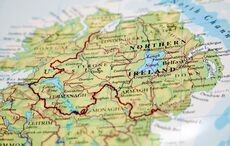There seems to be a misconception among a large amount of the public that it’s simple for an Irish person to immigrate to the United States. This is not the case, but President Barack Obama’s executive action on immigration reform sparked some hope that change may be coming, both for those living as undocumented and those longing to travel to the US.
Currently the Irish have three options if they want to immigrate to the United States long-term. They can marry a US citizen, be sponsored by their employers (H-1B) or win the visa lottery.
The majority of countries are given an allotment of US green cards annually (outside of lotteries and reciprocal visa programs they might have). Citizens of those countries can simply go to their local US embassy, fill out the appropriate paperwork and apply for a green card. Ireland does not have this option thanks to Taoiseach (Prime Minister) Sean Lemass.
In the early 1960s Lemass asked President John F Kennedy not to give Ireland an allotment of US visas in an attempt to stop the brain drain in Ireland. This was the last time the US immigration system got a complete overhaul.
Also, ironically, this did not stop the brain drain from Ireland and the Irish communities in Canada, Australia or Britain continue to thrive to this day, as they expand on the number of visas available to the Irish.
Sadly, Irish citizens are still suffering from Lemass' short-sightedness. The Irish have virtually no legal way to immigrate to the US legally.
Last year I was lucky enough to spend the day with the Irish Lobby for Immigration Reform (ILIR) while they worked to raise awareness at the North American Gaelic Games Finals in Cleveland, Ohio. I was startled to hear some Americans' reaction to seeing our stand. More than one member of the public actually asked us “Don’t the Irish have dual citizenship?”
So close is the bond between Ireland and America, and the Irish so much a part of many communities, you might be forgiven for thinking that the Irish have it easy when it comes to immigrating.
Without progression on the immigration issue in the US the Irish are left with just three options of legal immigration.
Firstly there’s the option to marry a US citizen. While there are many fairy tale stories of an Irish person coming to the US meeting someone and marrying for love more frequently there are deals done for cash (the going price is currently about $10,000) or between friends to marry for the visa. This has been going on for decades.
The second option is to get an H-1B visa through sponsorship. This requires third level education. The employee also has to convince their US employer and the immigration authorities that they’re the only person who can do the job. This visa lasts for only six years and is not a permanent “green card.” Although employers can go on to sponsor their employees for green cards, it is rare.
The third option, the lottery visa is just that – a lottery.
According to statistics on the Department of Homeland Security website, there are 55,000 lottery visas issues annually, and 5,000 are held back for Nicaragua and Central America. In 2013, out of the 50,000 visas available the Irish won 138. In 2012 they won 213. If you’re Irish and win a green card this way then you really do have the luck of the Irish.
Between 1995, when it was established, and 2011 there were 836,876 diversity visas (DV) issued globally. Ireland received 3,771 visas total, coming in at 43rd place. In first place was Ethiopia with 54,855, second was Nigeria with 54,331, then the Ukraine with 44,769, and so on.
From 2002 to 2011 a total of 10.5 million green cards were issued. The Irish received 0.15 percent of those visas and that’s including those who had their green card sponsored, married a US citizen or won a lottery. Ireland came in 85th place globally.
Things need to change and Obama’s executive order is simply a starting point.
Of those Irish who are undocumented in the United States it’s believed that the vast majority pay taxes. They work hard and are fulfilling their American dream in the midst of a broken immigration system in dire need a review and reform.
Seeing thousands of Irish and Irish Americans turn out to the GAA finals in Ohio last year we were reminded that without immigration reform Irish communities in the United States will continue to shrink. If immigration reform is successful we will still have hundreds of Irish lining the seats in Gaelic Park in the Bronx or turning out for County Dinner Dances and Irish cultural events. America needs change. We should learn from the short-sightedness of Lemass and work to fix the immigration system now.
* Originally published in 2014.




Comments